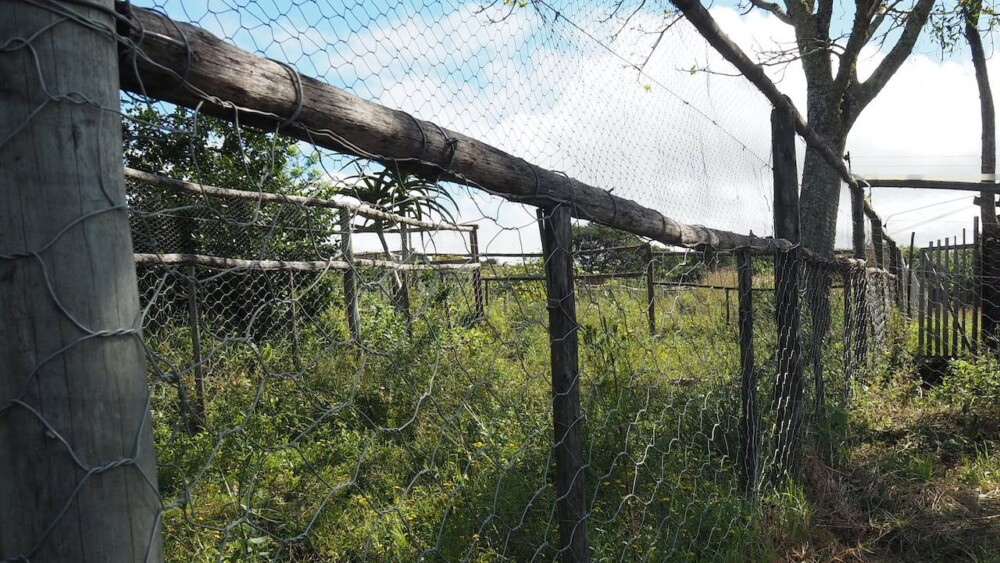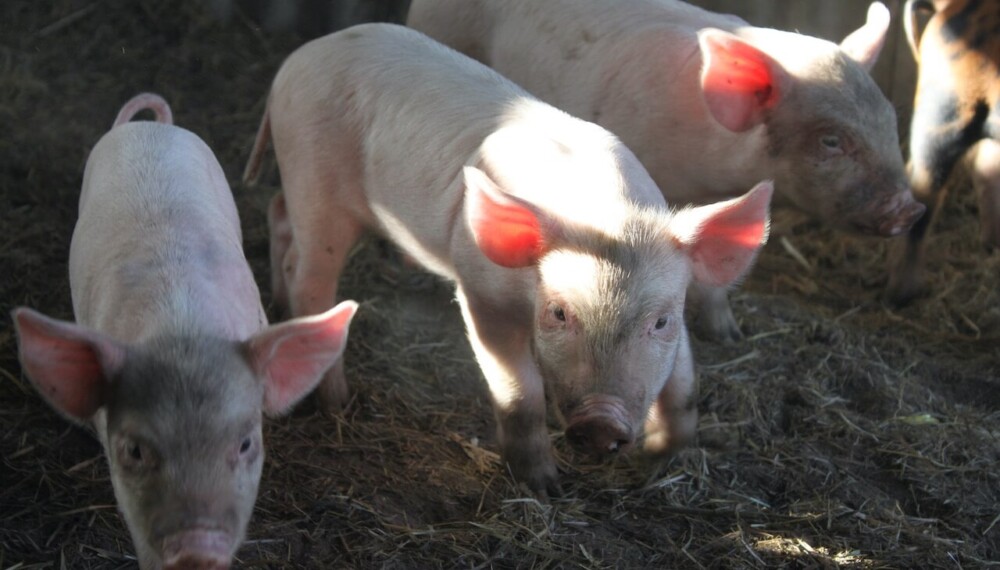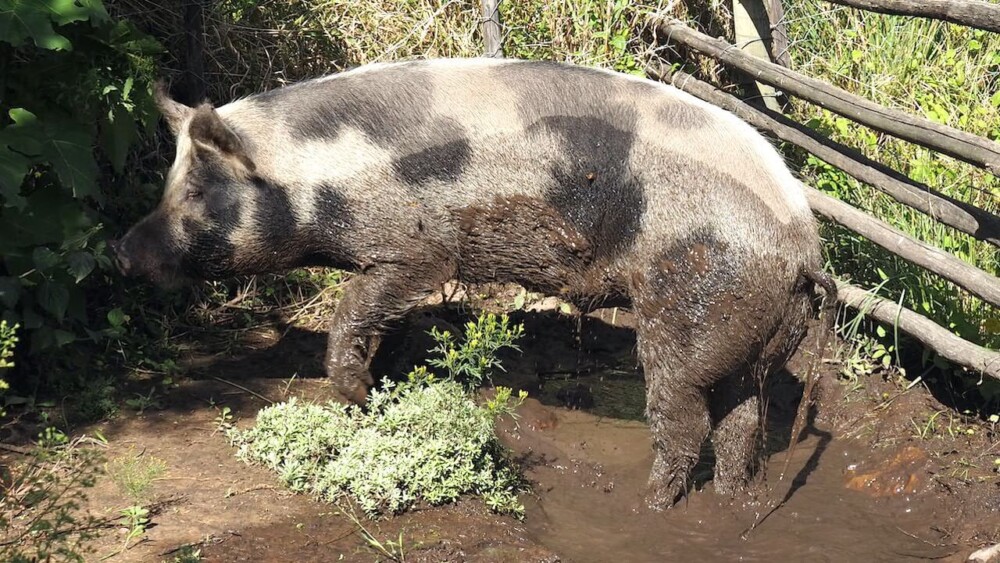We dedicated much of our 6-hectare small-holding to raising free-range pigs for ten years. Although we had a few challenges along the way, our pigs were generally happy, healthy, and bordering on profitability.
Can you have free-ranging pigs? Certain pig breeds can be free-ranged. Free-ranging pigs allow them to play an essential role in your farm’s ecosystem and grow quickly enough to prove profitable as livestock. Free-ranging is, in many ways, healthier than intensive pig farming but comes with its own set of challenges.
When we arrived on our small homestead, it had been over-utilized and was a haven for weeds but very little else. To help clear the land ready for planting, we introduced a small group of 5 Large White cross Duroc pigs. They performed the task quickly and efficiently, so fast that they started testing our fencing to see what delicious morsels might be on the other side.
We soon realized that we’d need to keep rotating our pigs to satisfy their appetites and limit their destructive tendencies. As the years went by, we became increasingly familiar with the challenges and dangers of free-ranging pigs. We also discovered the joys of seeing pigs living a natural life.
The Dangers and Challenges of Free-Ranging Pigs
Pigs are intelligent, curious creatures that enjoy plenty of mental stimulation. They are, however, muscular and destructive, so you need fences that can withstand those pressures. Indeed, every piece of infrastructure needs to be carefully designed and built with the pig’s strength in mind.
Unlike cows, pigs won’t get enough nutrition from pasture alone, so you need to factor in the costs of supplement feeding. Remember that your pig’s readiness for slaughter and reproductive performance relies heavily on the quantity and quality of its feed intake.
While some health issues will be easier to deal with in free-range pigs than in those farmed more intensively. Common pig diseases, like coccidiosis, swine dysentery, and respiratory conditions, are easier to control when your pigs live outside. On the other hand, parasites tend to be more of a problem with free-ranging pigs.
And, spotting a sick pig is more challenging when in a group. Free-range pigs also need protection against the weather as well as potential predators.
The Best Fencing For Free-Ranging Pigs
Fencing requirements for pasture kept pigs vary. We had a 500kg Duroc boar that needed 5-foot electrified fencing to stop him from clambering out of his enclosure to pursue the sows. Feeder pigs are smaller and have little interest in anything other than food, making them easier to keep enclosed.
Pigs will venture far and wide if your fencing isn’t strong enough to contain them. This exposes them to potential predation and increases the risk of injury. Secure fences will not only protect your pigs, but they will also protect the rest of your land, and livestock, from their destructive influences.
Start with some heavy-duty, treated fence posts no less than 3mm in diameter. These should be spaced between 12 and 20 feet apart and planted at least one foot into the ground. Use either hinge joint or wire mesh fencing to construct the rest of the fence, adding strong droppers every 3’ to reinforce the structure.

You can add electric wires at the top and bottom to deter your pigs from testing the fence or attempting to tunnel underneath it. Train your piglets to respect those electric wires, and you can often leave the electricity switched off without your pigs bothering to test it.
Permanent fencing of this kind is expensive and time-consuming to construct. If you plan to rotate your pigs regularly, a portable electric fence is more cost-effective, mobile, and easier to maintain.
Pigs on Pasture Need Strong Infrastructure
In addition to secure fences, pigs need access to the following:
Pigs Need Shade and Shelter
Shade is vital for pigs, especially those with white skins prone to sunburn. Pigs can quickly overheat if the temperature rises above 75℉. Trees provide both shade and natural scratching posts which your pigs will appreciate.
Although we found our sows would build large grass shelters, the hogs were less diligent. Either way, a sturdy structure is essential to protect your free-range pig against the elements.
A simple A-frame shelter built of sturdy wood is adequate. You can even place it on skids to make it more mobile.
Fresh Drinking Water Helps Optimize your Pigs’ Health
Pigs need plenty of fresh water and should consume approximately 2.5 times as much water as they do feed.

For piglets, that equates to around 0.5 gallons per day. For finishers or market hogs, it’s closer to 1.5 gallons.
Water helps the pig maintain their body temperature, regulates cell function, supports reproduction and growth, and helps remove metabolic waste. Without it, your pig could experience heat stress, reducing its feed intake and impacting growth rate.
Wallows Enable Pigs to Cool Off and Remove Parasites
In addition to drinking water, your pigs need somewhere to wallow and cool off. Your water supply can be anything from a woodland stream, pond, dam, river, or simply a dug-out hollow filled with water.
Pigs are natural wallowers, using the water and mud to cool down, remove parasites, and protect themselves against sunburn and biting insects.
Scratching Posts Reduce Pressure on Other Infrastructure
Pigs love a good scratch, especially after they’ve been wallowing. Providing scratching posts isn’t essential, but it will protect your other infrastructure from itchy pigs.
How and When to Rotate your Free-Ranging Pigs
You should ideally plan to rotate your pigs every couple of weeks. This regime will ensure that their impact on the land is positive. On a small-holding like ours, where intensive agriculture left it struggling to survive, pigs can help make the land healthier. They till and fertilize the soil while removing stubborn roots, brush and weeds. However, if left on a piece of land too long, they can quickly decimate it.
Rotating times vary depending on the type of forage your pigs are utilizing. If they’re in brushy or forest areas, it will take longer to clear the weeds and prepare the site for better pasture in the future. If you already have high-quality forage available, shorter rotations will help protect it.
Health Issues Affecting Free-Ranging Pigs
Over the years of free-ranging pigs, the following health issues were the most frequent and challenging:
Controlling Parasites in the Pasture-fed Pig
Mites, ticks, horse flies, and lice are all as eager to taste free-range pork as you are. Unfortunately, they cause irritations, skin lesions, and infections when they sit down for a meal. Worse still, they can negatively impact your pig’s feed efficiency, growth rate, and slaughter value.
You can keep some external parasites at bay by adding garlic to your pig’s feed. As a natural pesticide, garlic helps deter biting insects and boosts the immune system.
Regular deworming can also help reduce your pig’s parasitic burden, although we found using injectable dewormers virtually impossible. A pig’s skin is so tough that it takes a big needle and a lot of force to get through it. Oral dewormers are easier to use, provided you don’t have a fussy eater in your herd.

Feeding Free Range Pigs
Don’t expect a free-ranging pig to flourish on grass alone. Pigs are opportunistic scavengers and, as such, don’t have the digestive systems needed to break down the cellulose in plant material. Pigs can survive on grasses, which will negatively affect their growth rate and reproduction ability.
Free-range pigs need supplementary feeding, especially during summer and autumn, to build up the fat cover they need to last the winter.
A complete pig feed will provide the crude protein and amino acids your pigs need to thrive. Many good-quality products, like this one, also contain probiotics to optimize gut health.
You can also supplement your pigs’ diets with kitchen scraps and excess fruit and vegetables. You may even find neighboring farms, restaurants, or bakeries that have food wastage that they’re happy for you to take away.
The Best Breeds for Free-Ranging Pigs
The best breeds for free-ranging pigs are those with sturdy legs, hairy coats, and pigmented skin. These attributes enable them to forage over rough terrain, protect them against the cold and rain, and prevent sunburn.
We were more successful free-ranging Duroc pigs than Large Whites or Yorkshires. Durocs were more resistant to ticks and other external parasites. Their darker skin also meant they were less prone to sunburn.
Other good pig breeds for free-ranging include:
- Berkshire – a hardy breed that gains weight well on pasture
- Tamworth – a smaller breed known for its ability to forage
- Chester White – stockily built with a long life expectancy
- Hampshire – and even-tempered breed that thrives on pasture
- Poland China – a slow-growing breed with good foraging abilities
- Landrace – excellent mothers with high milk production

How to Work Out the Stocking Rate for Free-Ranging Pigs
Pig farmers base their stocking rate on weight rather than the number of animals. This is because the impact that a herd of ten 65-pound pigs has on the land is the same as one 650 lb animal. When you start free-ranging pigs, aim for a stocking rate of between 3,000 to 6,000 lbs per acre. Therefore, you need one acre of land if you have five 600lb pigs. Your requirements will be the same if you’ve got 10 x 300lb pigs.
Use the table below to get a better idea of how many pigs you can sustain with each acre of land:
| Type | Age | Average Weight | No. per Acre |
| Weaner | 8-12 weeks | 35 to 45 lb | 75 to 150 |
| Feeder | 12-20 weeks | 60 to 100 lb | 50 to 100 |
| Finisher (market-ready) | =/- 6 months | 100 to 200 lb | 15 to 60 |
| Finisher (market-ready) – no rotation |
=/- 6 months | 100 to 200 lb | 15 to 20 |
| Sows | 6 months + | 450 to 500 lb | 6 to 12 |
| Hogs | 6 months + | 500 to 650 lb | 5 to 10 |
This calculation assumes that you’re rotating your pigs regularly. To work out how many pigs you can have on your land in the long run, you need to factor in the stock density.
Space Needed to Accommodate Two Free Range Pigs
Based on the formula of 3,000 to 6,000 lbs per acre, you could have two Yorkshires, or Large White pigs, on half or even a quarter of an acre. Weighing between 550 and 800 lbs, Yorkshire pigs are one of the largest breeds and require the most pasture.
If you opt for smaller breeds, like the Kunekune and Ossabaw Island, you could accommodate five to six pigs on an acre of pasture.
The type of pasture will also influence the stocking rate. If you have a densely forested section of land, it can sustain more pigs for a longer period. On the other hand, you may only be able to accommodate one or two adult pigs on an acre of poorer pasture.
| Breed | No. Pigs Per Acre (Min) | No. Pigs Per Acre (Max) |
| Berkshire | 5 | 15 |
| Chester White | 4 | 12 |
| Duroc | 3 | 8 |
| Hampshire | 4 | 12 |
| Kunekune | 13 | 46 |
| Landrace | 4 | 13 |
| Poland China | 3 | 12 |
| Yorkshire | 4 | 13 |
Shelter Sizes Vary According To Breed
Even if you have ample pasture for your pigs, you still need to provide ample stall space. Whether an outdoor shelter or a pen or stall, it still needs to give your pigs enough room to stretch their legs without exposing themselves to the elements.
A general rule of thumb is to provide around 4 x 8 square feet per pig, but this will vary according to breed.
| Breed | Average Weight | Space per Square Foot |
| Kunekune | 130 to 220 lb | 6×4 |
| American Guinea Hog | 150 to 300 lb | 6×8 |
| Berkshire | 500 to 600 lb | 8×8 |
| Landrace | 600 to 700 lb | 8×8 |
| Duroc | 700 to 800 lb | 8×10 |
| Large White | 750 to 850 lb | 10×10 |
Frequently Asked Questions
What does Free-ranging pigs mean? Free ranged pigs live outside in a fenced pasture that allows them to roam around and root the natural grass and weeds in the area. Free-ranged pigs should be given supplemental feed to maintain good growth rates. Pigs do not do well without fencing as they naturally tend to explore and can pose a danger to other animals and people.
Can pigs live in the woods? Pigs can live in the woods, and Ferrel pigs often do. Pastured pigs can be kept in the woods, but should have adequate fencing. Woods provide shelter and a wide variety of plants, insects, nuts, seeds, and roots. Pigs should be rotated so that they don’t destroy the natural habitat or can be used to clear an area of weeds and roots.
Why is free-ranged pork better? Many people consider free-ranged pork to be better tasting because of the wider diversity of foods pigs eat. Free-ranged pork also has a slower growth rate. In addition, the pigs lived a higher quality of life with the freedom to roam, enjoy the outdoors, and choose from various roots, bugs, plants, and feed.
Do Pigs Destroy Pasture? Pigs can destroy pasture if they are not rotated quickly enough. But, when pigs are adequately rotated, they can improve the pasture quality. That’s because pigs prefer weeds, thistles, and dandelions and eliminate them from your pasture within a couple of years. This provides a way for fresh, healthy grass to come in.
Do Pigs Damage Trees? Pigs use trees as scratching posts and the intense rubbing can damage the bark and leave trees susceptible to incepts, parasites, and bacterial and fungal infections. Rotating pigs through wooded areas helps alleviate this damage.
Why do Pigs Tear Up The Ground? Pigs naturally “root” or dig into the ground to look for the roots of plants and grubs to eat. The constant digging into the ground can cause holes and uneven areas that erode faster from wind and rain. Rotating pigs around an area is important so that the natural or pasture vegetation can come back and thrive.
Conclusion
Free-ranging pigs work the soil and bring home the bacon when managed correctly. You can put them on poorer pastures to clear the land and improve the soil quality. While some supplementary feeding is required, the best free-ranging breeds will gain weight foraging and benefit from living a natural life. Free-ranging pigs can flourish with the proper infrastructure, fencing, and rotation.
My Most Used Pig Supplies
This list contains affiliate products. Affiliate products do not cost more but helps to support BestFarmAnimals and our goal to provide farm animal owners with accurate and helpful information.
Purina Pig Chow will last well (or Mazuri is popular, but I haven’t tried it), and the stainless steel non-skid bowls that will help keep the mess down.
A pig blanket to keep her warm. This one also has bright colors and helps to provide rooting without the destruction.
Pig Harness for walking and handling your pig. There are a lot to choose from, but this one is pretty easy to use. If you want one that has a separate leash, this looks like a good one.
A large crate for keeping her safe in your house at night and when you leave the house. This is essential. You’ll also want a litterbox, and I like mine with a lid for nighttime. Pine shavings are best, and you may be able to find them in larger quantities locally.
When you have accidents, Odoban will help eliminate odors. When you are potty training, these floor pads work great for keeping your house clean while training her to go in certain places.
You’ll also want an outdoor house to keep her warm when she gets outside time, an essential part of her development.
Dewormer- Ivermectin is the primary dewormer I use, although I do rotate with a non-ivermect ingredient once so that the worms don’t get immune to it.

